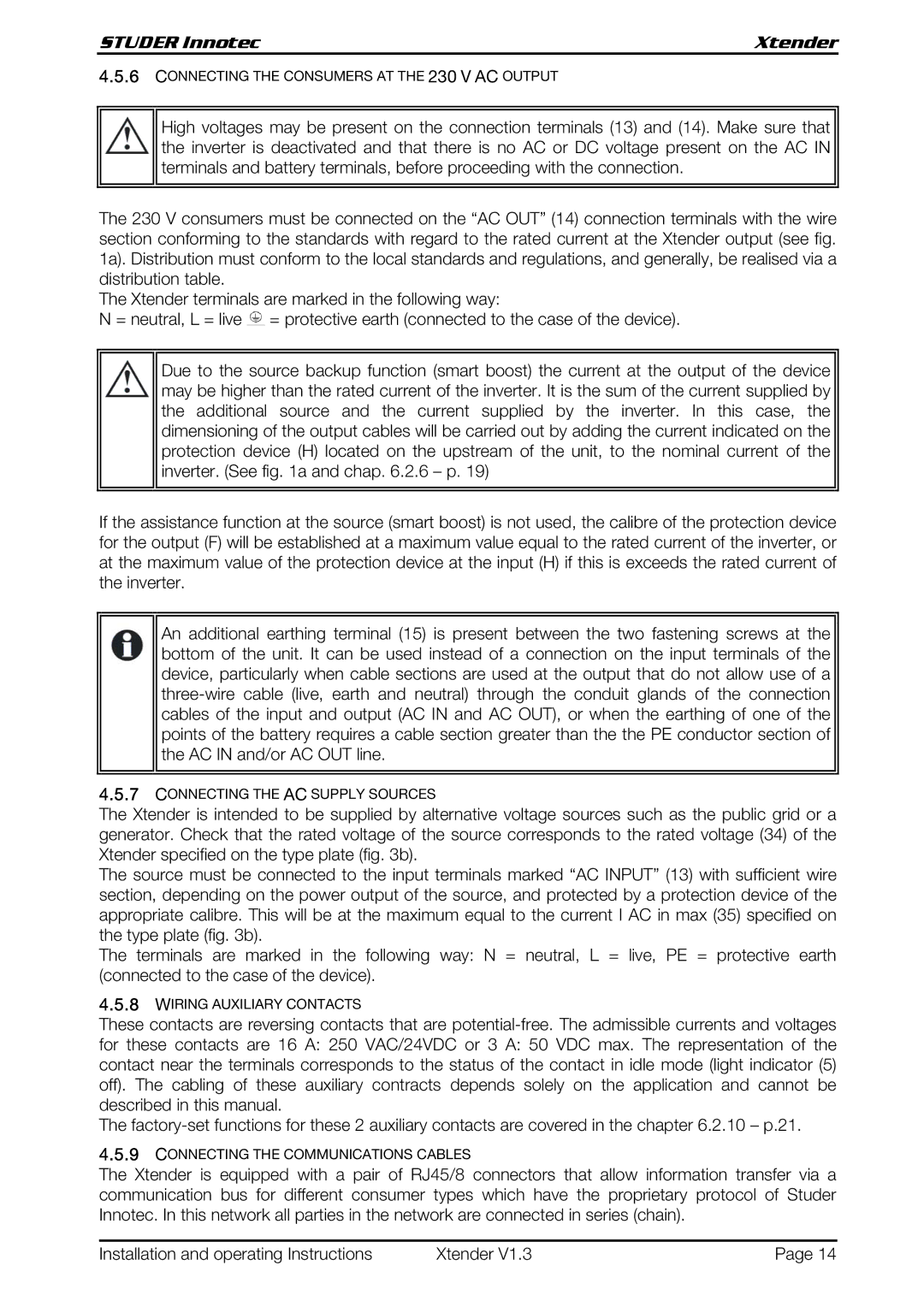
STUDER Innotec | Xtender |
4.5.6CONNECTING THE CONSUMERS AT THE 230 V AC OUTPUT
High voltages may be present on the connection terminals (13) and (14). Make sure that the inverter is deactivated and that there is no AC or DC voltage present on the AC IN terminals and battery terminals, before proceeding with the connection.
The 230 V consumers must be connected on the “AC OUT” (14) connection terminals with the wire section conforming to the standards with regard to the rated current at the Xtender output (see fig. 1a). Distribution must conform to the local standards and regulations, and generally, be realised via a distribution table.
The Xtender terminals are marked in the following way:
N = neutral, L = live ![]() = protective earth (connected to the case of the device).
= protective earth (connected to the case of the device).
Due to the source backup function (smart boost) the current at the output of the device may be higher than the rated current of the inverter. It is the sum of the current supplied by the additional source and the current supplied by the inverter. In this case, the dimensioning of the output cables will be carried out by adding the current indicated on the protection device (H) located on the upstream of the unit, to the nominal current of the inverter. (See fig. 1a and chap. 6.2.6 – p. 19)
If the assistance function at the source (smart boost) is not used, the calibre of the protection device for the output (F) will be established at a maximum value equal to the rated current of the inverter, or at the maximum value of the protection device at the input (H) if this is exceeds the rated current of the inverter.
An additional earthing terminal (15) is present between the two fastening screws at the bottom of the unit. It can be used instead of a connection on the input terminals of the device, particularly when cable sections are used at the output that do not allow use of a
4.5.7CONNECTING THE AC SUPPLY SOURCES
The Xtender is intended to be supplied by alternative voltage sources such as the public grid or a generator. Check that the rated voltage of the source corresponds to the rated voltage (34) of the Xtender specified on the type plate (fig. 3b).
The source must be connected to the input terminals marked “AC INPUT” (13) with sufficient wire section, depending on the power output of the source, and protected by a protection device of the appropriate calibre. This will be at the maximum equal to the current I AC in max (35) specified on the type plate (fig. 3b).
The terminals are marked in the following way: N = neutral, L = live, PE = protective earth (connected to the case of the device).
4.5.8WIRING AUXILIARY CONTACTS
These contacts are reversing contacts that are
The
4.5.9CONNECTING THE COMMUNICATIONS CABLES
The Xtender is equipped with a pair of RJ45/8 connectors that allow information transfer via a communication bus for different consumer types which have the proprietary protocol of Studer Innotec. In this network all parties in the network are connected in series (chain).
Installation and operating Instructions | Xtender V1.3 | Page 14 |
